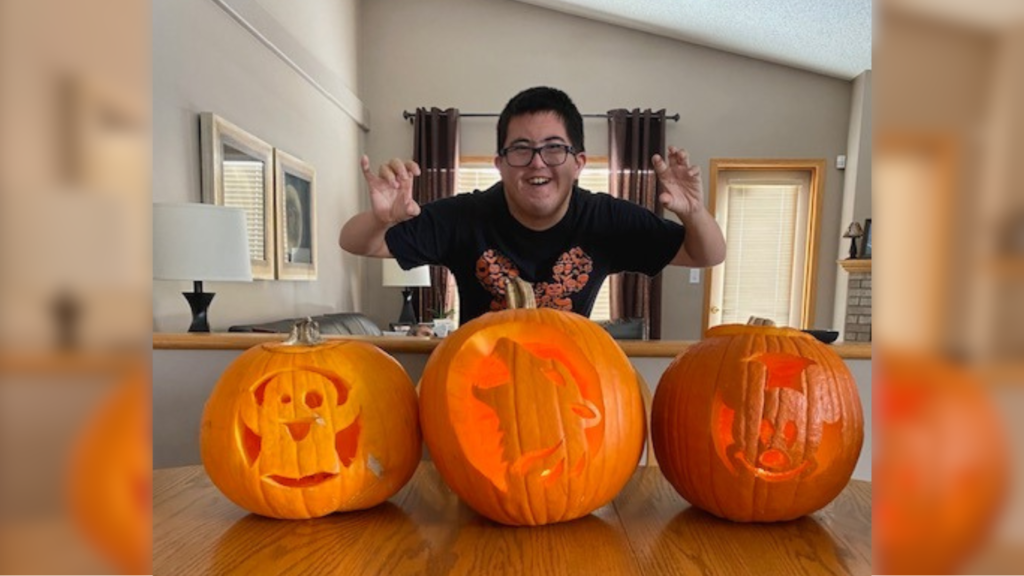
Former Leisure in Fun Environments (LIFE) Program participant Daniel Cowen has become a role model, inspiring other youth as an active member of the Rehabilitation Center for Children community. A long-standing LIFE Program stakeholder and member of the Youth Advisory Council, Daniel works to create inclusive spaces and advocates for youth living with disabilities in Manitoba.
Now 23, Daniel first received care from RCC at a young age after being diagnosed with Down Syndrome. During his time at RCC, Daniel was introduced to the LIFE Program, which offers a variety of activities including cooking clubs, boccia and parent free social opportunities. Although he eventually aged out of the program, Daniel’s positive experiences made him eager to return, this time as a volunteer.
“Daniel was, and is, happy to volunteer with the LIFE Program,” explains his mother, Cathy Cowen, on his behalf. “He enjoys helping out and staying connected to the LIFE Program and the people there.”
The LIFE Program focuses on fostering an inclusive, accessible and fun environment where participants can try new activities, maintain their health and socialize. Daniel embraced this atmosphere, diving into his interests in boccia, dancing in Zumba classes, and celebrating his favorite holiday at the Halloween-themed Fall Festival every October as a volunteer.
His uplifting energy and care for his roles were quickly noticed by the LIFE Program Coordinators who recommended Daniel become an advocate on the Youth Advisory Council.
“Daniel brings a vibrant energy and enthusiasm to the work of the Youth Advisory Council,” said Maya Woods, Co-Coordinator, LIFE Program and Family Engagement Facilitator, RCC/SSCY Family Network. “He is always actively engaged in discussions and projects and enjoys connecting with the other Youth Leaders.”
The impact of Daniel’s involvement in LIFE programming and the Youth Advisory Council extends to his family who are grateful to have such programs in Manitoba.
“We love to see Daniel actively engaged and giving back to the LIFE program and SSCY,” shared Cathy Cowen. “We say the LIFE Program has given him life and we are very pleased he is still able to be involved with the programming. It is a wonderful program, and Daniel is happy to be there to help and visit with friends and participants.”
Visit the RCC website to learn more about LIFE Programming and the Youth Advisory Council.
Visit the CRF website to learn more about how donations fund the LIFE Program and Family Network.

